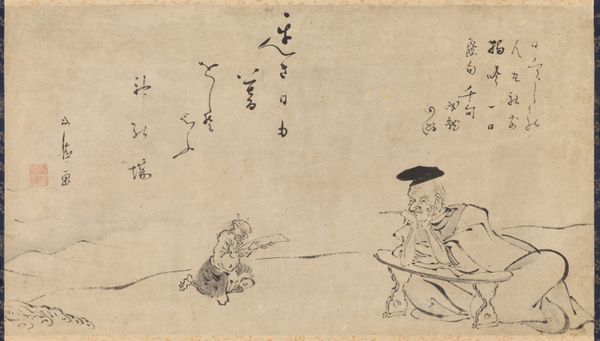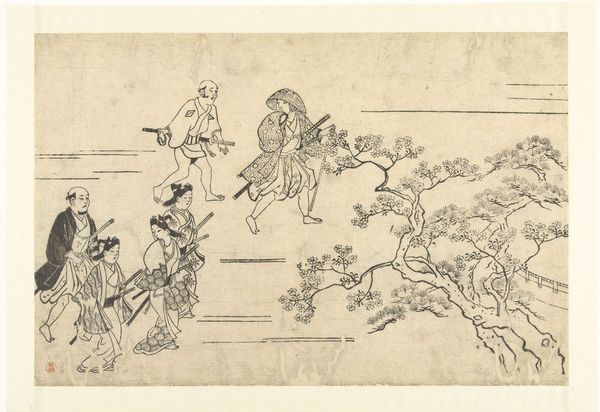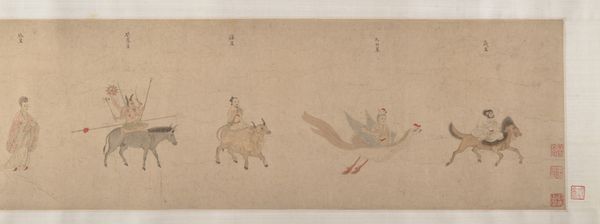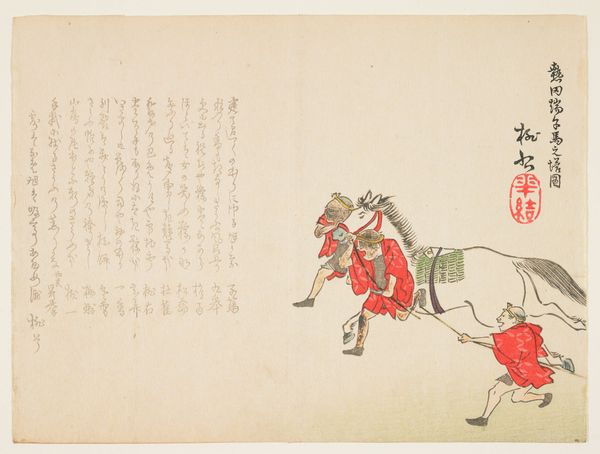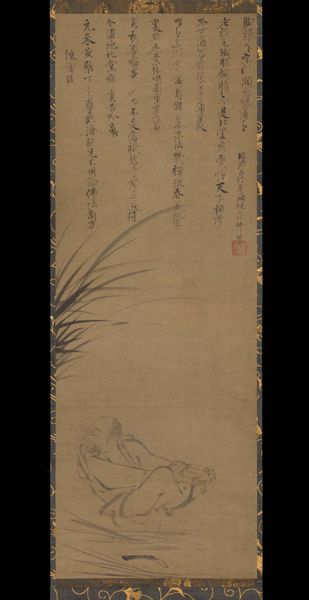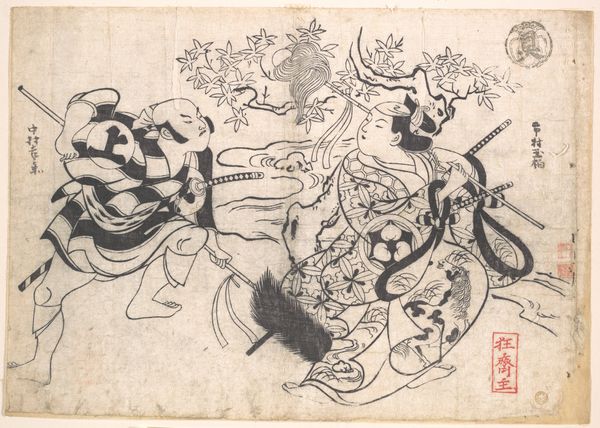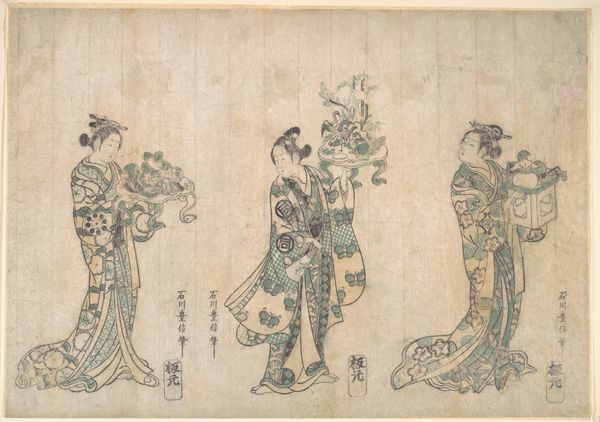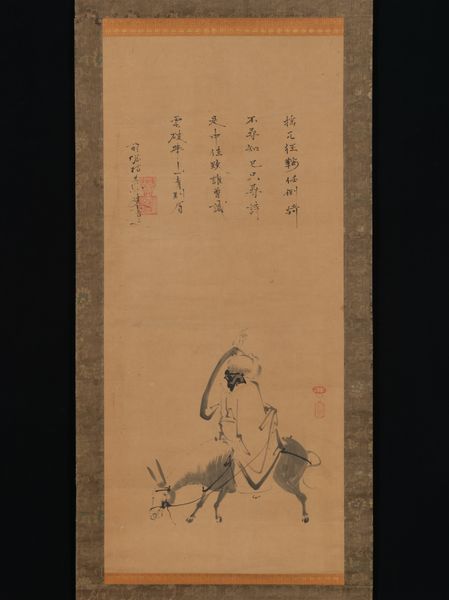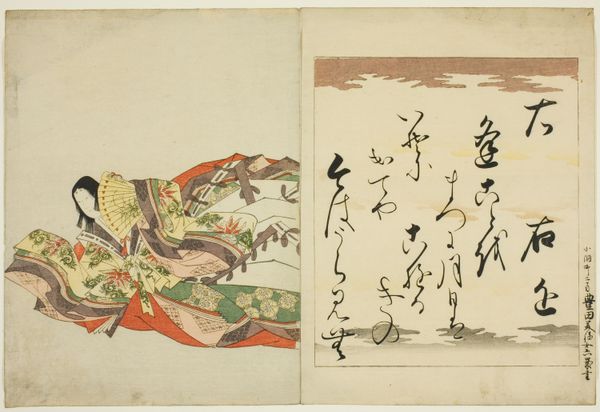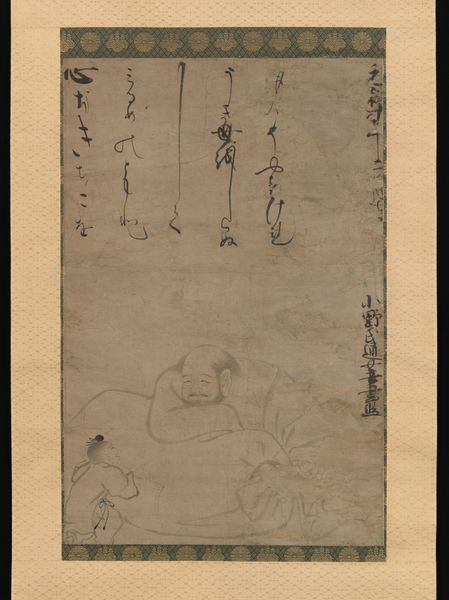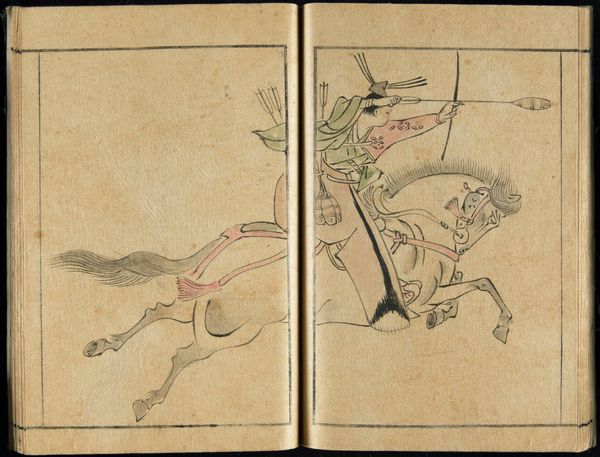
drawing, ink
#
drawing
#
asian-art
#
landscape
#
figuration
#
ink
Dimensions: height mm, width mm
Copyright: Rijks Museum: Open Domain
Curator: I'm struck by the delicacy of line and how effectively the artist creates a sense of expansive space despite using minimal ink on what appears to be aged paper. It evokes a sense of quiet contemplation. Editor: Absolutely. When I first looked at it, the two halves almost feel like two sides of the same coin; each mirror one another, suggesting a sense of balance or even duality. Curator: Precisely. This drawing, aptly titled "Landschap in Chinese stijl," or "Landscape in Chinese style," dates back to around 1800. Created by Sasaya, the artwork employs ink on paper. What is remarkable is that this composition, even with its sparseness, offers insight into how landscape painting styles crossed continents and became reimagined in different political and cultural contexts. Editor: I agree, there is an exchange happening. When I look at how the structures and trees are stylized and rendered across the two landscape sketches, it becomes evident that this artistic creation represents a hybrid aesthetic—a visual record of the integration of multiple, yet connected visual cultures. How are those elements of chinoiserie shaping public appreciation? Curator: In many ways. I'd posit this is why the artist purposefully incorporates very particular compositional elements--these served as immediate, accessible touchstones. Landscape, figuration, and of course the drawing’s cultural and technological proximity to broader notions of Asian art all served as shorthand signifiers of Sasaya’s artistry. Editor: So much is conveyed by that simplicity, too. We are subtly shown the artist's familiarity with cultural references while remaining aware of the constraints placed on the artist. Who, where, and why can transform this deceptively simple landscape study into a very complex, political visual commentary about intercultural representation. Curator: These landscape sketches underscore how artists have acted as conduits for ideas and aesthetics, translating and reinterpreting them for audiences with vastly different experiences. Editor: Which speaks volumes about the artist's skill in adapting and personalizing an established style to articulate unique expression. Thank you for that view, it offers much food for thought. Curator: A necessary viewpoint if we're to accurately read these images, to connect them to our world. Thank you.
Comments
No comments
Be the first to comment and join the conversation on the ultimate creative platform.
